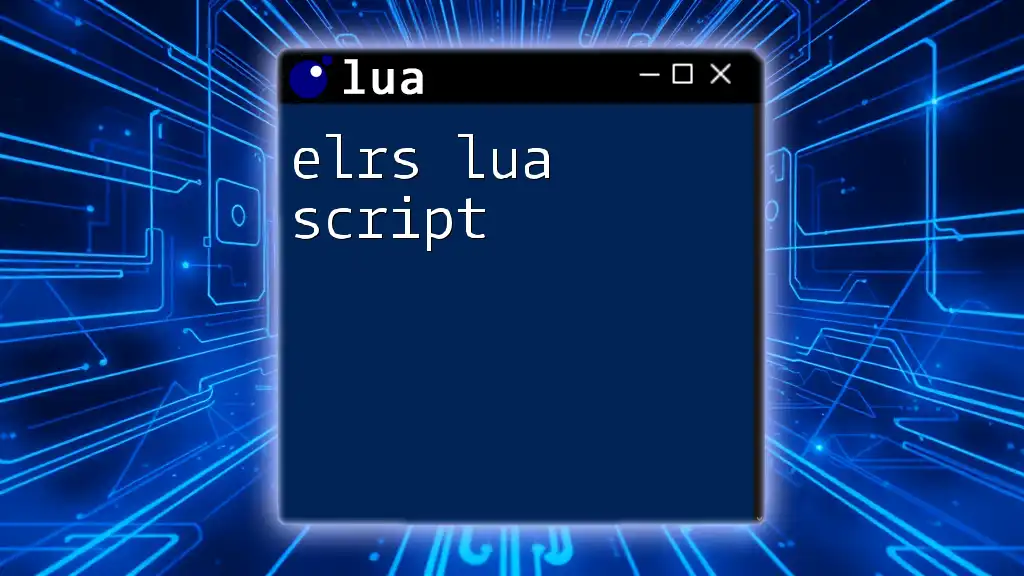YimMenu is a customizable menu interface for the game FiveM that allows users to execute Lua scripts for various functionalities, enhancing gameplay experiences.
Here's a simple Lua script example for YimMenu:
function onMenuOpen()
displayNotification("Welcome to YimMenu!")
end
menu.onOpen(onMenuOpen)
Understanding Yimmenu
What is Yimmenu?
Yimmenu is a versatile, user-friendly menu management system that allows users to create and manipulate menus in various applications. It offers a dynamic interface that responds to user inputs and facilitates interactive experiences. Users can customize their workflows efficiently by leveraging Yimmenu's features alongside Lua scripting, which provides a powerful mechanism for customization.
How Yimmenu Works with Lua
Lua is a powerful lightweight scripting language that easily integrates into Yimmenu. The flexibility and simplicity of Lua allow users to write concise scripts that can handle complex tasks, transforming static menu systems into dynamic, user-driven experiences. By using Lua, you open the door to limitless possibilities in personalizing your Yimmenu implementations, enhancing user interactions significantly.

Setting Up Your Environment
Required Software
To get started with Yimmenu Lua scripts, you'll need a few essential tools:
- Lua Interpreter: Download and install Lua from its [official website](https://www.lua.org/download.html).
- Yimmenu Setup: Obtain the Yimmenu files, which may be available through a reliable repository or the developer's site.
Configuring Yimmenu
Once you've installed the necessary tools, you'll want to configure Yimmenu to suit your needs. Create a `.yim` file to hold your configurations. This file acts as the backbone of your menu setup, allowing you to customize menu behaviors and interactions. Make sure to familiarize yourself with the configuration options available to maximize Yimmenu's potential.

Creating Your First Yimmenu Lua Script
Basic Script Structure
Understanding the elements of a basic Lua script will set a solid foundation for working with Yimmenu. A typical Lua script in this context includes functions, variables, and structured logic.
function myFunction()
print("Hello, Yimmenu!")
end
In this simple function, we define `myFunction` which prints a welcoming message when invoked. This structure allows you to encapsulate functionality that can be invoked later in your Yimmenu scripts.
Script Example: Hello World
Let’s dive into your very first Yimmenu script!
-- My first Yimmenu script
function greeting()
return "Welcome to Yimmenu with Lua!"
end
print(greeting())
In this example, the function `greeting()` returns a welcome message that gets printed in the console. This is a great starting point for understanding how functions operate within Lua and how they can be leveraged in Yimmenu.

Working with Menus in Yimmenu
Creating Menus with Lua
Creating menus in Yimmenu with Lua can be straightforward. A menu is typically structured as a table containing a title and items.
menu = {
title = "Options",
items = {
{name = "Item 1", action = "action1"},
{name = "Item 2", action = "action2"},
}
}
In the snippet above, we define a menu titled "Options" that contains two items, each linked to respective actions. This structure is crucial for dynamically generating menus based on user interactions.
Adding Menu Items
To enhance your menu, you might want to add new items. This can be easily done using the `table.insert` function.
table.insert(menu.items, {name = "Item 3", action = "action3"})
By executing this line, "Item 3" is added to the existing menu. This flexibility allows you to adjust menus on the fly, responding to user needs or program flow.

Advanced Yimmenu Lua Scripting
Using Functions and Callbacks
Functions are essential for creating a responsive user experience in Yimmenu. They allow you to execute specific actions when an item is selected in the menu.
function performAction(action)
if action == "action1" then
print("Action 1 executed!")
end
end
This `performAction` function takes an `action` parameter, enabling different outputs based on what the user chooses. Incorporating such callbacks transforms static menus into interactive experiences, enhancing usability.
Integrating External Libraries
To further extend the functionalities of your scripts, you might consider integrating external libraries. This adds additional capabilities, such as JSON parsing, which is useful for data management.
local json = require("json")
By including libraries like JSON, you can efficiently handle complex data structures within your Yimmenu scripts, making them adaptable to various applications.

Debugging Yimmenu Lua Scripts
Common Errors and Solutions
As you develop Yimmenu Lua scripts, you may encounter common pitfalls. For example, forgetting to close a function or a syntax error may cause your script to break. Always check your code for unbalanced parentheses or incorrect variable names.
Tools for Debugging
Utilizing debugging tools can help streamline your scripting process. Tools such as LuaRocks or IDEs with built-in Lua support can significantly enhance your debugging experience, providing real-time feedback and syntax highlighting.

Best Practices for Yimmenu Scripts
Writing Clean and Maintainable Code
Writing clean code is vital for maintainability. Keep your scripts organized and add comments to clarify complex sections.
-- This function does XYZ
function xyzFunction()
-- code here
end
Adding comments like the one in the example above helps others (and yourself) understand the code far easier when revisiting it later.
Optimization Techniques
Optimizing your code can lead to significant improvements in performance. Consider avoiding global variables where possible and using local variables instead, as they are faster and reduce memory consumption.

Community and Resources
Joining the Yimmenu Community
Becoming part of the Yimmenu community can provide unlimited benefits. Engaging with forums, Discord channels, and GitHub repositories allows you to learn from others, share your projects, and find inspiration.
Additional Resources
Look for recommended books and online courses that delve deeper into both Lua and Yimmenu scripting. Websites dedicated to Lua scripting often contain substrates of code snippets and documentation that can enhance your skills and understanding.

Conclusion
This comprehensive guide has equipped you with the essentials of Yimmenu Lua scripts. You’ve learned how to set up your environment, create dynamic menus, and employ effective debugging techniques. By practicing these concepts, you are well on your way to mastering Lua scripting within Yimmenu. Happy scripting!

















